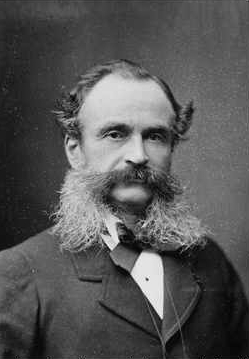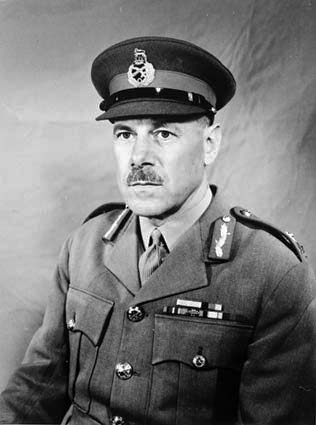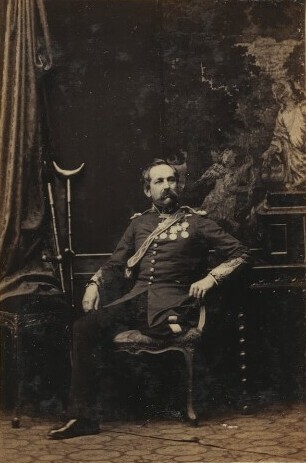Related Research Articles
The Master-General of the Ordnance (MGO) was a very senior British military position from 1415 to 2013 with some changes to the name, usually held by a serving general. The Master-General of the Ordnance was responsible for all British artillery, engineers, fortifications, military supplies, transport, field hospitals and much else, and was not subordinate to the commander-in chief of the British military. In March 2013 the holder was titled as "Director Land Capability and Transformation", but still sat on the Army Board as Master-General of the Ordnance; in September 2013 the post was eliminated.

The Chief of the General Staff (CGS) has been the title of the professional head of the British Army since 1964. The CGS is a member of both the Chiefs of Staff Committee and the Army Board; he is also the Chair of the Executive Committee of the Army Board. Prior to 1964, the title was Chief of the Imperial General Staff (CIGS). Since 1959, the post has been immediately subordinate to the Chief of the Defence Staff, the post held by the professional head of the British Armed Forces.

Lieutenant General Sir William Francis Drummond Jervois was a British military engineer and diplomat. After joining the British Army in 1839, he saw service, as a second captain, in South Africa. In 1858, as a major, he was appointed Secretary of a Royal Commission set up to examine the state and efficiency of British land-based fortifications against naval attack; and this led to further work in Canada and South Australia. From 1875 to 1888 he was, consecutively, Governor of the Straits Settlements, Governor of South Australia and Governor of New Zealand.

Field Marshal Sir John Fox Burgoyne, 1st Baronet, was a British Army officer. After taking part in the Siege of Malta during the French Revolutionary Wars, he saw action under Sir John Moore and then under the Duke of Wellington in numerous battles of the Peninsular War, including the Siege of Badajoz and the Battle of Vitoria. He served under Sir Edward Pakenham as chief engineer during the War of 1812. He went on to act as official advisor to Lord Raglan during the Crimean War advocating the Bay of Kalamita as the point of disembarkation for allied forces and recommending a Siege of Sevastopol from the south side rather than a coup de main, so consigning the allied forces to a winter in the field in 1854.
Commander-in-Chief, Ireland, was title of the commander of the British forces in Ireland before 1922. Until the Act of Union in 1800, the position involved command of the distinct Irish Army of the Kingdom of Ireland.

Marshal of the Royal Air Force Sir Edward Leonard Ellington, was a senior officer in the Royal Air Force. He served in the First World War as a staff officer and then as director-general of military aeronautics and subsequently as controller-general of equipment. In the inter-war years he held command positions in the Middle East, in India and then in Iraq. He served as Chief of the Air Staff in the mid-1930s and in that role he implemented a plan, known as 'Scheme F'. This scheme implemented an increase in the size of the Royal Air Force to 187 squadrons within three years to counter the threat from Hitler's Germany. He also broke up the command known as "Air Defence of Great Britain" to create RAF Fighter Command, RAF Bomber Command, RAF Coastal Command and RAF Training Command. He then served as Inspector-General of the RAF until his retirement in 1940.

Field Marshal William Gustavus Nicholson, 1st Baron Nicholson, was a British Army officer who served in the Second Anglo-Afghan War, the Mahdist War, the Third Anglo-Burmese War, the Second Boer War and the First World War. He became Chief of the Imperial General Staff and was closely involved in the reorganisation of the British Army in the early years of the 20th century.

The Scots Guards (SG) is one of the five Foot Guards regiments of the British Army. Its origins are as the personal bodyguard of King Charles I of England and Scotland. Its lineage can be traced back to 1642 in the Kingdom of Scotland, although it was only placed on the English Establishment in 1686.

General Sir Bindon Blood, was a British Army commander who served in Egypt, Afghanistan, India, and South Africa.
Air Chief Marshal Sir John Whitworth-Jones, was a pilot in the First World War and a senior Royal Air Force commander during the Second World War. After the latter he held several senior RAF appointments before his retirement in 1954.

Lieutenant General Sir Mervyn Francis Brogan, was a senior officer in the Australian Army who served as Chief of the General Staff from 1971 to 1973.
Lieutenant-General Sir William Terence Shone, was a senior British Army officer.
The Queen's Birthday Honours 1900 were announced on 23 May 1900 in celebration of the birthday of Queen Victoria. The list included appointments to various orders and honours of the United Kingdom and British India.
The 1891 Birthday Honours were appointments by Queen Victoria to various orders and honours to reward and highlight good works by citizens of the British Empire. The appointments were made to celebrate the official birthday of The Queen, and were published in the London Gazette on 29 May 1891 and in The Times on 30 May 1891.
The 1895 Birthday Honours were appointments by Queen Victoria to various orders and honours to reward and highlight good works by citizens of the British Empire. The appointments were made to celebrate the official birthday of The Queen, and were published in The Times on 25 May 1895 and in The London Gazette on 25 May 1895 and on 11 June 1895.
The 1896 Birthday Honours were appointments by Queen Victoria to various orders and honours to reward and highlight good works by citizens of the British Empire. The appointments were made to celebrate the official birthday of The Queen, and were published in The London Gazette on 20 May and 26 May and in The Times on 20 May 1896.
Lieutenant-General Sir Charles Felix Smith, was an officer of the British Royal Engineers, of which he was colonel-commandant from 1856. He was acting Governor of Trinidad in 1828, 1830, and 1831; acting Governor of Demerara and of Berbice in 1833; acting Governor of St. Lucia in 1834; and acting Governor of Gibraltar in 1838. He received the Orders of Carlos III and of San Fernando of Spain in 1814, and the Ottoman Order of Glory in 1841.

Henry Charles Cunliffe-Owen, (1821–1867) was an English officer in the British Army, rising to the rank of lieutenant-colonel in the Royal Engineers. After graduating from Woolwich, he served variously, including in the campaign against insurgent Boers, and in the Kaffir War of 1845–1847, in the Cape. Returning to England, he was appointed to civilian posts: general superintendent of the Great Exhibition of 1851, and afterwards inspector of art schools in the department of practical art. This last appointment he resigned to fight in the Crimean War, and he was gravely wounded before Sebastopol; whereupon he was made a C.B. and pensioned. He later served as deputy inspector-general of fortifications, from 1856 to 1860, and commanding Royal Engineer of the western district, from 1860. He was made regimental lieutenant-colonel in 1862. He was a staunch High Church Anglican.
References
- Porter, Whitworth (1889). History of the Corps of Royal Engineers. Vol. II. London: Longmans, Green and Co.